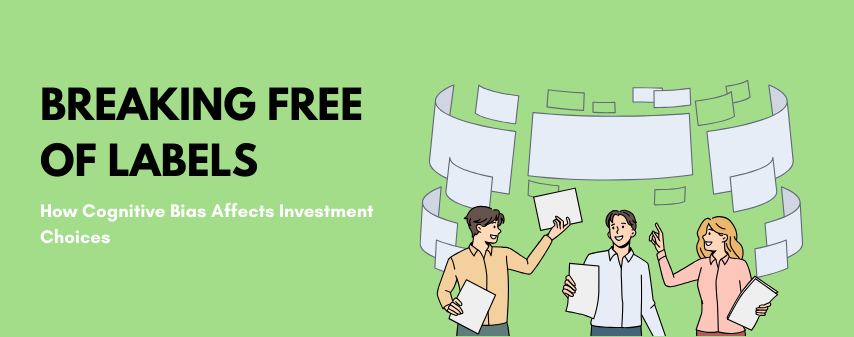Breaking Free of Labels: How Cognitive Bias Affects Investment Choices

Introduction
When it comes to investing, certain labels—like large-cap, mid-cap, and small-cap—often shape how we view stocks. While these categories provide useful information, they can also lead to distorted judgments due to a psychological phenomenon known as cognitive bias. In this article, we’ll explore how cognitive biases can affect investment decisions and why focusing on the fundamentals of individual stocks is the key to smarter investing.
Understanding Stock Labels: Large-Cap, Mid-Cap, and Small-Cap
In the investing world, stocks are generally classified by market capitalization. Large-cap stocks represent well-established companies with significant market value, often perceived as more stable. Mid-cap stocks belong to companies that are still growing but have reached a certain level of stability. Small-cap stocks, meanwhile, are typically from newer or smaller companies with higher growth potential but also come with higher risk.
For new investors, these labels offer a helpful guide to understanding potential risks and returns. However, for experienced investors, these labels may reinforce preconceived notions, leading to cognitive bias and influencing decision-making in unintentional ways.
What is Cognitive Bias?
Cognitive bias refers to subconscious errors in thinking that can affect our decision-making process. In investing, these biases often come into play when investors rely too heavily on labels like large-cap or small-cap, associating them with safety or risk without conducting a thorough analysis of the individual stock’s true value and potential.
For example, an investor might avoid small-cap stocks altogether due to the perception that they are too risky or might favor large-cap stocks under the assumption that they are always safe. Each stock should be evaluated based on its own merit, not its category.
How Cognitive Bias Affects Investment Choices
- Overconfidence in Large-Cap Stocks: Many investors assume large-cap stocks are always the safest option. While large-cap companies tend to have a history of stability, being overly confident in these stocks may lead investors to miss out on valuable opportunities in mid-cap and small-cap sectors. A diversified portfolio across different stock categories can offer better potential for returns.
- Ignoring the Growth Potential of Small-Cap Stocks: Small-cap stocks often get sidelined by investors who view them as too risky. However, these stocks can offer significant growth potential. Cognitive bias may prevent investors from exploring these opportunities and realizing the benefits of their high-growth prospects.
- The Overlooked Middle Option In some cases, investors may overlook mid-cap stocks, which offer a blend of both stability and growth. Cognitive bias may lead investors to gravitate toward either large-cap or small-cap stocks, thereby missing the balanced performance that mid-cap stocks can provide.
Focusing on Fundamentals
To break free from cognitive bias, investors—whether new or experienced—should shift their focus from labels to fundamentals. Instead of viewing large-cap stocks as inherently safe or small-cap stocks as inherently risky, each stock should be evaluated based on key indicators like financial health, revenue growth, industry positioning, and future potential. By focusing on these factors, investors can make more informed decisions based on solid data, rather than relying on broad market-cap labels.
Conclusion:
Breaking free from cognitive bias requires a conscious effort to look beyond stock labels. Whether you’re a new investor or a seasoned professional, focusing on individual stock fundamentals rather than categories like large-cap, mid-cap, or small-cap can help you make better, more informed investment decisions.
By investing with a clear, unbiased approach, you’ll allow the potential of the stock and its fundamentals—not labels—to guide your strategy.
Note: Mutual fund investments are subject to market risks. Read all scheme-related documents carefully before investing. The past performance of the schemes is neither an indicator nor a guarantee of future performance.
When it comes to investing, certain labels—like large-cap, mid-cap, and small-cap—often shape how we view stocks. While these categories provide useful information, they can also lead to distorted judgments due to a psychological phenomenon known as cognitive bias.


Leave a Reply